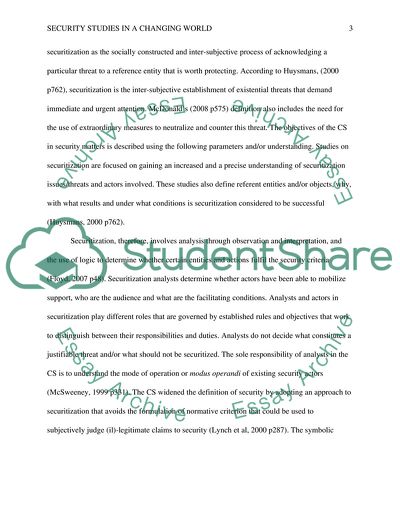Cite this document
(Security Studies in a Changing World Coursework, n.d.)
Security Studies in a Changing World Coursework. Retrieved from https://studentshare.org/social-science/1808399-in-what-ways-did-the-concept-of-securitization-lead-to-the-re-thinking-of-security-threats
Security Studies in a Changing World Coursework. Retrieved from https://studentshare.org/social-science/1808399-in-what-ways-did-the-concept-of-securitization-lead-to-the-re-thinking-of-security-threats
(Security Studies in a Changing World Coursework)
Security Studies in a Changing World Coursework. https://studentshare.org/social-science/1808399-in-what-ways-did-the-concept-of-securitization-lead-to-the-re-thinking-of-security-threats.
Security Studies in a Changing World Coursework. https://studentshare.org/social-science/1808399-in-what-ways-did-the-concept-of-securitization-lead-to-the-re-thinking-of-security-threats.
“Security Studies in a Changing World Coursework”. https://studentshare.org/social-science/1808399-in-what-ways-did-the-concept-of-securitization-lead-to-the-re-thinking-of-security-threats.


